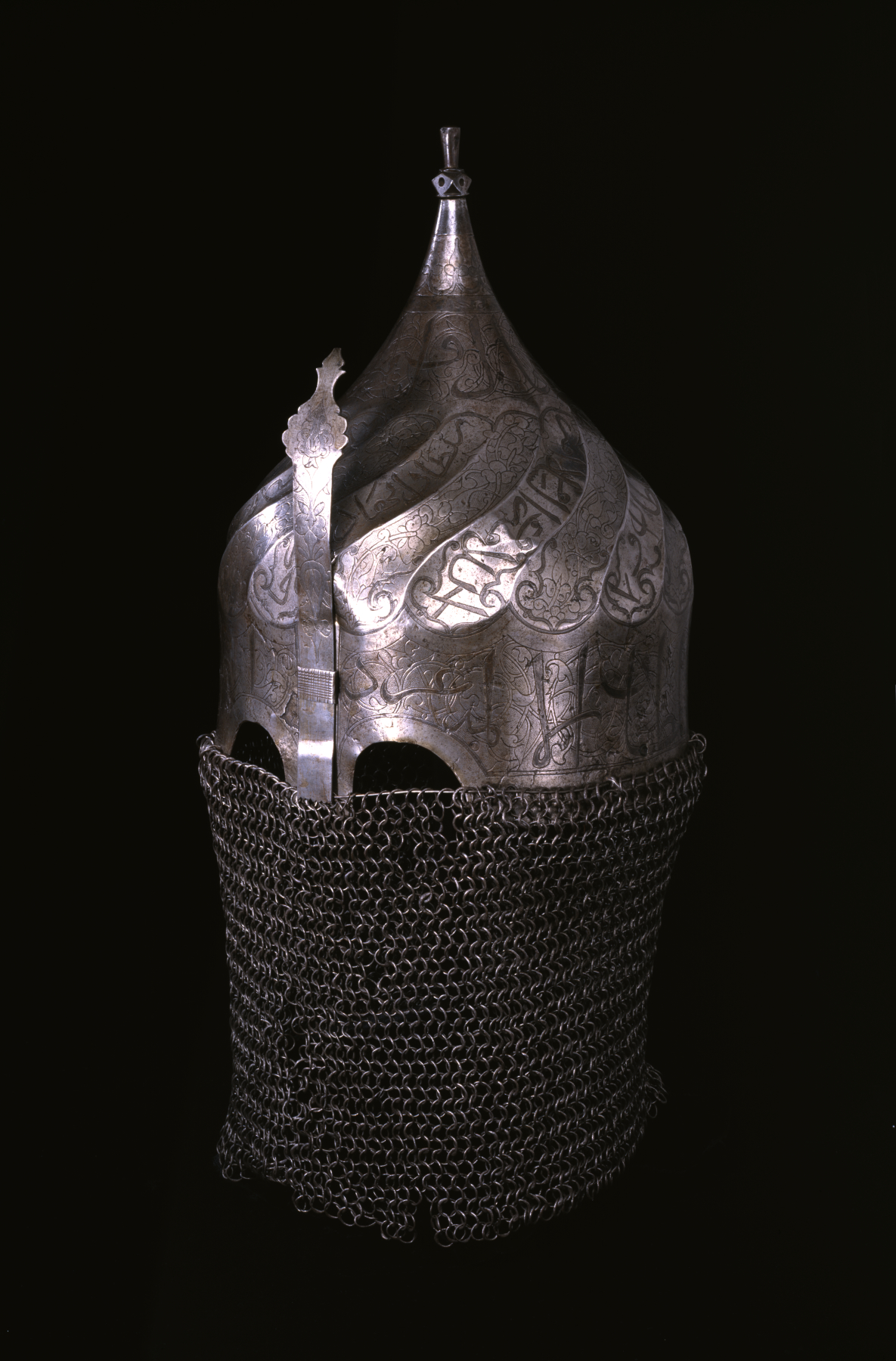Turban Helmet with Neck Guard of Mail and Nose Guard
Helmets like this, which have preserved their original chain-mail "aventail," or face and neck covering, have been likened to masks that conceal the face and create a sense of mystery. Their primary function, however, was to protect the wearer. Islamic helmets often were decorated with inscriptions that invoke God's power and blessing. Sometimes, as here, the writing cannot be easily deciphered and may even be meaningless-the presence of letter-like designs was evidently regarded as sufficient protection.
Provenance
Provenance (from the French provenir, 'to come from/forth') is the chronology of the ownership, custody, or location of a historical object. Learn more about provenance at the Walters.
Arsenal of Constantinople; d'Orville [date and mode of acquisition unknown] (?); Dikran Kelekian, New York and Paris [date and mode of acquisition unknown]; Henry Walters, Baltimore, 1911, by purchase; Walters Art Museum, 1931, by bequest.
Exhibitions
| 1999-2000 | Masks: Faces of Culture. Saint Louis Art Museum, St. Louis; The Field Museum, Chicago; The Museum of Fine Arts, Houston, Houston. |
| 1971-1972 | World of Wonder. The Walters Art Gallery, Baltimore. |
| 1940 | Again: Arms and Armor. Baltimore Museum of Art, Baltimore. |
Geographies
Iran (Place of Origin)
Measurements
20 1/16 x 9 3/16 x 8 15/16 in. (51 x 23.4 x 22.7 cm)
Credit Line
Acquired by Henry Walters, 1911
Accession Number
In libraries, galleries, museums, and archives, an accession number is a unique identifier assigned to each object in the collection.
In libraries, galleries, museums, and archives, an accession number is a unique identifier assigned to each object in the collection.
51.75


